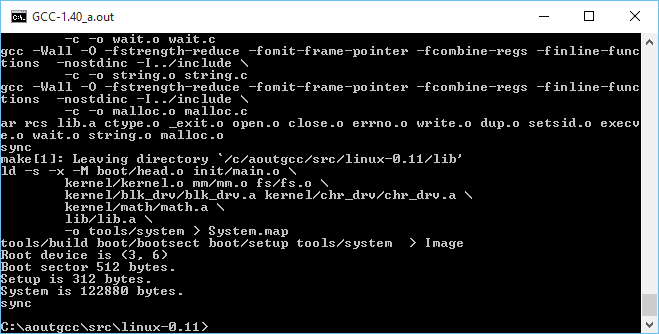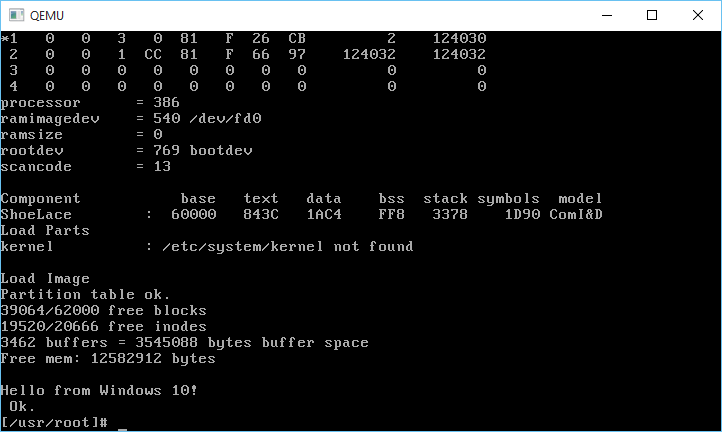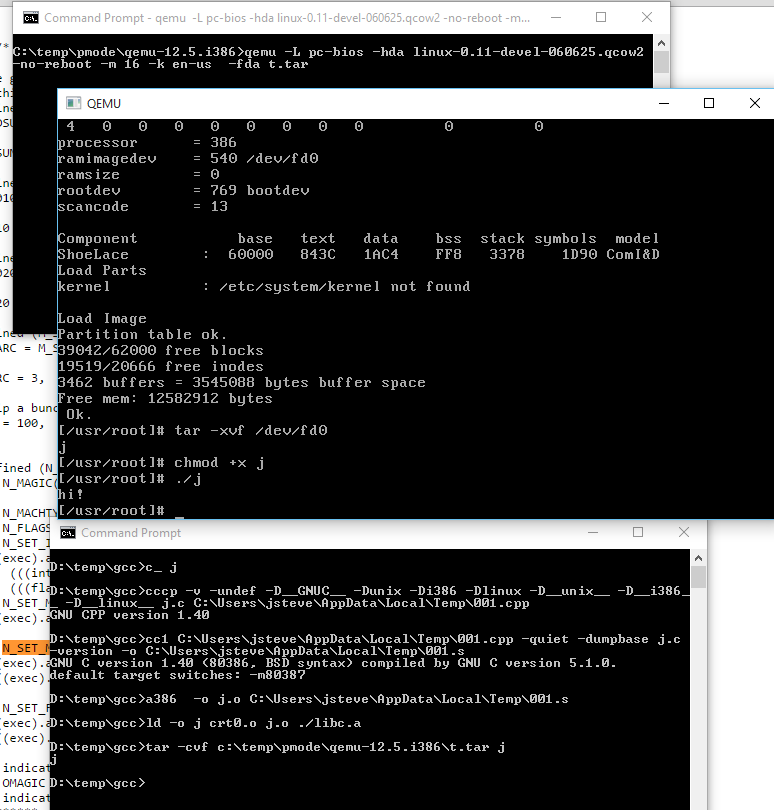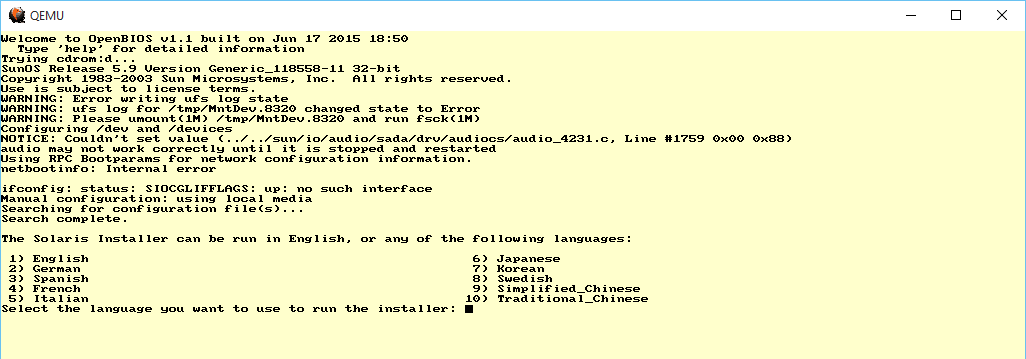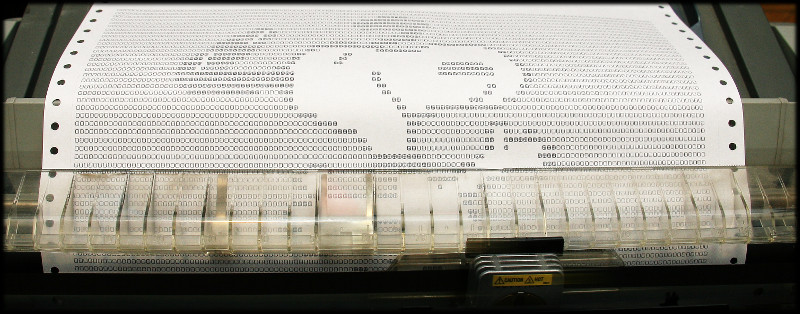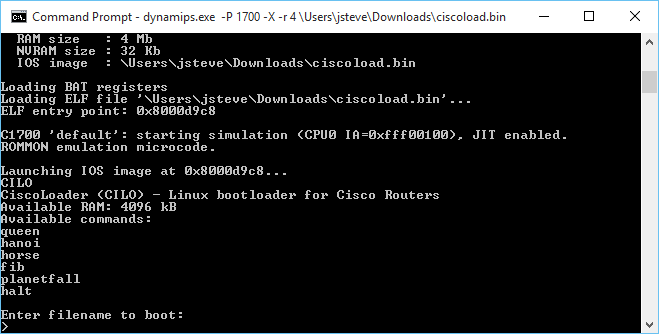So a while back, I built some stuff for Solaris on QEMU, and stuck it in a virtual disk. Â Great. Â Now the fun is years later trying to use it for yet another project.
By default Solaris doesn’t magically build out the dev tree so adding a disk won’t make it magically appear in the dev tree. Â Add the ‘-r’ flag when booting, and it’ll do that. Â I still like the verbose boot, so from the prom it’s ‘boot disk0 -rv’
Type help for more information
ok boot disk0 -rv
Boot device: /iommu/sbus/espdma@5,8400000/esp@5,8800000/sd@0,0 File and args: -rv
And away we go!
while the kernel boots I can see it see’s my second disk
sd0 at esp0: target 0 lun 0
sd0 is /iommu@0,10000000/sbus@0,10001000/espdma@5,8400000/esp@5,8800000/sd@0,0
<Qemu2GB cyl 4090 alt 2 hd 16 sec 63>
sd1 at esp0: target 1 lun 0
sd1 is /iommu@0,10000000/sbus@0,10001000/espdma@5,8400000/esp@5,8800000/sd@1,0
<Qemu2GB cyl 4090 alt 2 hd 16 sec 63>
sd2 at esp0: target 2 lun 0
sd2 is /iommu@0,10000000/sbus@0,10001000/espdma@5,8400000/esp@5,8800000/sd@2,0
<Qemu2GB cyl 4090 alt 2 hd 16 sec 63>
And once it starts user processes it’ll add in the device files
Configuring the /dev directory
Configuring the /dev directory (compatibility devices)
Which is great. Â But how to view the disklabel?
prtvtoc can tell us, remember that s2 is the ‘whole disk’ on SYSV.
# prtvtoc /dev/rdsk/c0t2d0s2
* /dev/rdsk/c0t2d0s2 partition map
*
* Dimensions:
* 512 bytes/sector
* 63 sectors/track
* 16 tracks/cylinder
* 1008 sectors/cylinder
* 4092 cylinders
* 4090 accessible cylinders
*
* Flags:
* 1: unmountable
* 10: read-only
*
* First Sector Last
* Partition Tag Flags Sector Count Sector Mount Directory
0 2 00 0 132048 132047
1 3 01 132048 263088 395135
2 5 01 0 4122720 4122719
6 4 00 395136 3727584 4122719
So we have a 0, the 1 is ‘swap’, 2 is he whole disk, and a 6.
Running fsck can reveal that 0 is a real filesystem:
# fsck /dev/rdsk/c0t2d0s0
** /dev/rdsk/c0t2d0s0
** Last Mounted on /mnt
** Phase 1 – Check Blocks and Sizes
** Phase 2 – Check Pathnames
** Phase 3 – Check Connectivity
** Phase 4 – Check Reference Counts
** Phase 5 – Check Cyl groups
4 files, 32504 used, 29111 free (15 frags, 3637 blocks, 0.0% fragmentation)
while 6 is not.
# fsck /dev/rdsk/c0t2d0s6
** /dev/rdsk/c0t2d0s6
BAD SUPER BLOCK: MAGIC NUMBER WRONG
USE AN ALTERNATE SUPER-BLOCK TO SUPPLY NEEDED INFORMATION;
eg. fsck [-F ufs] -o b=# [special …]
where # is the alternate super block. SEE fsck_ufs(1M).
Sadly none of the stuff in there is ‘ready to run’ but rather built in it’s source directory.
And I wanted to make a 2GB /usr/local on another disk, so I copied my disk template file, (can use the OS, or the gnu-utils) and run format on the disk.
It was a matter of clearing out partitions, and making ONE BIG partition 0.
# format /dev/rdsk/c0t1d0s2
selecting /dev/rdsk/c0t1d0s2: data
[disk formatted]
Warning: Current Disk has mounted partitions.
FORMAT MENU:
disk – select a disk
type – select (define) a disk type
partition – select (define) a partition table
current – describe the current disk
format – format and analyze the disk
repair – repair a defective sector
label – write label to the disk
analyze – surface analysis
defect – defect list management
backup – search for backup labels
verify – read and display labels
save – save new disk/partition definitions
inquiry – show vendor, product and revision
volname – set 8-character volume name
quit
format> partition
PARTITION MENU:
0 – change `0′ partition
1 – change `1′ partition
2 – change `2′ partition
3 – change `3′ partition
4 – change `4′ partition
5 – change `5′ partition
6 – change `6′ partition
7 – change `7′ partition
select – select a predefined table
modify – modify a predefined partition table
name – name the current table
print – display the current table
label – write partition map and label to the disk
quit
partition> print
Volume: data
Current partition table (original):
Total disk cylinders available: 4090 + 2 (reserved cylinders)
Part Tag Flag Cylinders Size Blocks
0 alternates wm 0 – 4069 1.96GB (4070/0/0)
1 unassigned wu 0 0 (0/0/0)
2 backup wu 0 – 4089 1.97GB (4090/0/0)
3 unassigned wm 0 0 (0/0/0)
4 unassigned wm 0 0 (0/0/0)
5 unassigned wm 0 0 (0/0/0)
6 unassigned wm 0 0 (0/0/0)
7 unassigned wm 0 0 (0/0/0)
Good fun. Â As always don’t forget how to mount the CD-ROM under Qemu, and add packages as needed.
I still think the quickest, and easiest way to power ‘off’ the VM is the poweroff command.
# poweroff
Apr 18 20:26:33 qemu24 poweroff: poweroffed by root
Apr 18 20:26:35 qemu24 syslogd: going down on signal 15
syncing file systems… done
Brutal, quick, and efficient.

